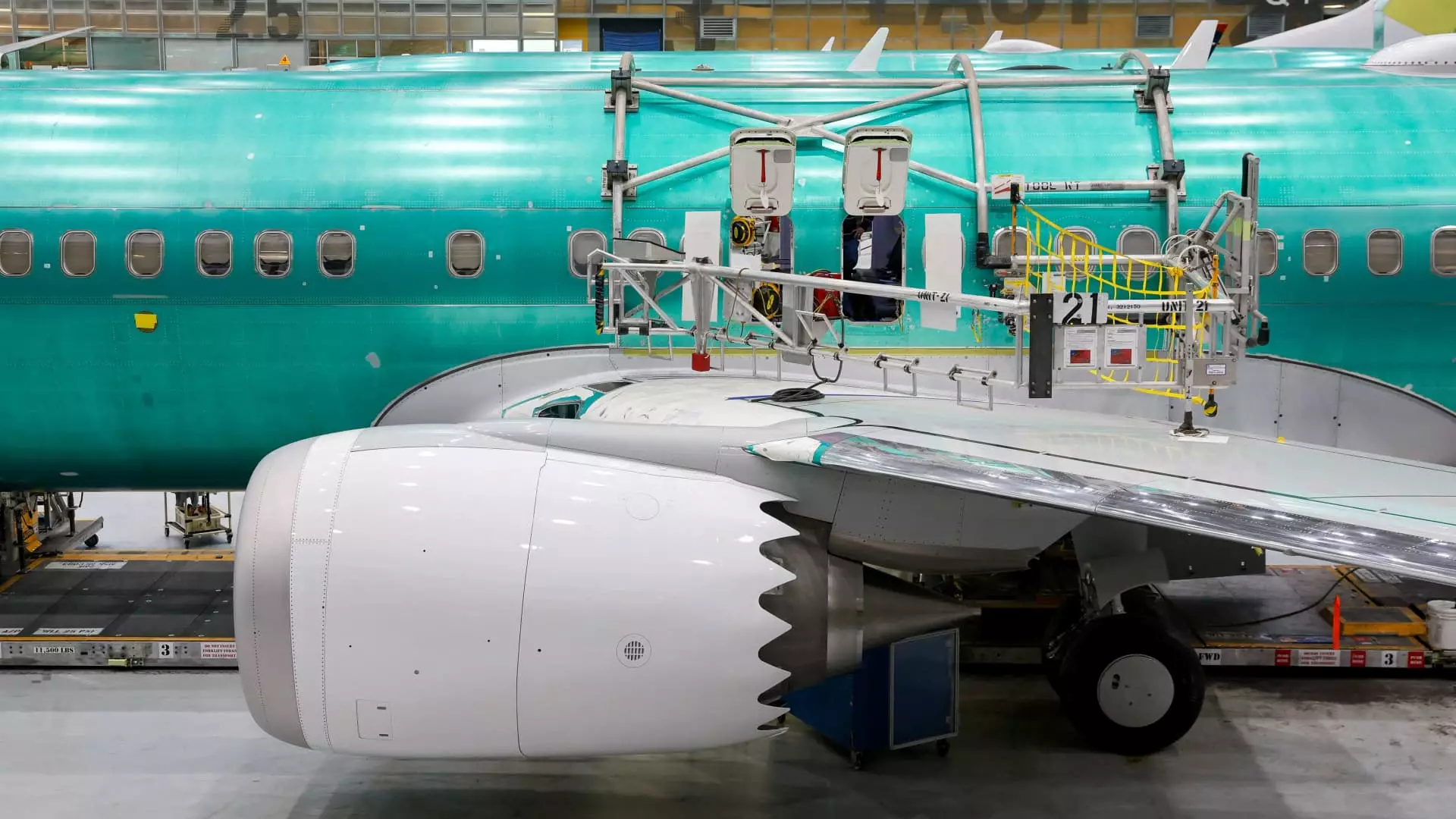Boeing, a cornerstone of the U.S. aerospace industry, is facing one of its most challenging moments in recent history. The past year has been marked by significant scrutiny, primarily ignited by a harrowing incident involving an Alaska Airlines-operated Boeing 737 Max 9. A fuselage panel covering an unused emergency exit door disengaged midair, creating panic among passengers. Fortunately, thanks to the piloting skills and robust safety measures in place, the aircraft made a safe emergency landing in Portland, Oregon, with no serious injuries reported. This incident not only raised alarms about operational safety but also acted as a catalyst for the National Transportation Safety Board (NTSB) investigations, which unveiled shocking inadequacies, including the discovery that crucial bolts were absent from the plane before leaving Boeing’s Renton factory.
In stark contrast to the S&P 500’s impressive 27% gain over the past year, Boeing’s stock plummeted over 30%. This appalling statistic underscores the depth of distrust in Boeing’s capabilities, prompting urgent measures from company leaders and government regulators alike.
To counteract the repercussions of its recent crises, Boeing has embarked on an ambitious overhaul in its leadership and operational strategies. A critical pivot occurred with the appointment of a new chief executive, Kelly Ortberg, a distinguished figure in the aerospace field with substantial experience steering Rockwell Collins. The introduction of fresh leadership comes at a time when corporate culture and worker morale are under intense scrutiny. Acknowledging the gravity of the situation, Ortberg has expressed a commitment to prioritizing quality and safety over profit margins, halting the cycle of “rush-to-market” strategies that have plagued the company.
During the past year, the company has initiated comprehensive training programs aimed at enhancing the skills of its factory workers, many of whom are newcomers to the industry. This investment in human capital represents a strategic decision to address the quality issues that have marred Boeing’s reputation. The introduction of random quality audits in manufacturing facilities demonstrates a newfound commitment to rectifying previous mistakes. Early indications of progress include reduced defects in fuselages produced by Spirit AeroSystems, coupled with streamlined production processes to mitigate potential errors.
Amidst these internal changes, Boeing is under increased scrutiny from the Federal Aviation Administration (FAA), which has imposed stricter oversight to ensure compliance and safety standards. The FAA capped the production rate of Boeing’s 737 Max jets, maintaining that enhanced monitoring would continue in the foreseeable future. FAA administrator Mike Whitaker emphasized that Boeing’s turnaround is not merely a short-term project but rather a long-term transformation requiring sustained commitment to safety and quality.
In a statement laden with significance, Whitaker noted, “What’s needed is a fundamental cultural shift at Boeing that’s oriented around safety and quality above profits.” This assertion encapsulates the existential challenge faced by Boeing in mending its public persona and restoring confidence among stakeholders and customers alike.
The financial landscape for Boeing remains troubling, with the company having recorded losses exceeding $30 billion since 2019. The specter of the two fatal crashes involving the 737 Max, which collectively claimed 346 lives, continues to overshadow Boeing’s operations. The aircraft was grounded globally for nearly two years, revealing systemic flaws in design and operations that have since plagued the company. As it stands, Boeing has not posted an annual profit since 2018, a grim milestone that underscores the monumental task that lies ahead for its new leadership.
Despite this, as the company navigates this transitional phase, there exists a sliver of hope. Recent negotiations led to the approval of a new labor deal that granted significant wage increases to unionized workers while addressing ongoing concerns about pension plans—albeit without reinstating pensions.
Moving forward, Boeing’s focus will be on stabilizing production processes to ensure timely delivery of aircraft, particularly as global travel demand continues to rise in the post-pandemic landscape. Unable to match Airbus in terms of delivery volumes, Boeing’s leadership must find innovative solutions to regain its competitive edge while fostering a culture of safety and quality.
Boeing stands at a crossroads, with uncertain challenges ahead. Yet, under the stewardship of Kelly Ortberg and a reinvigorated commitment to quality, the aerospace giant is taking steps to redefine its operational philosophy. As Ortberg notes, “We’re better off doing less and doing it better than doing more and not doing it well.” The world now watches closely as Boeing strives for recovery, rebuilding trust, and positioning itself for sustainable future growth amidst the turbulence of the aerospace industry.


Leave a Reply